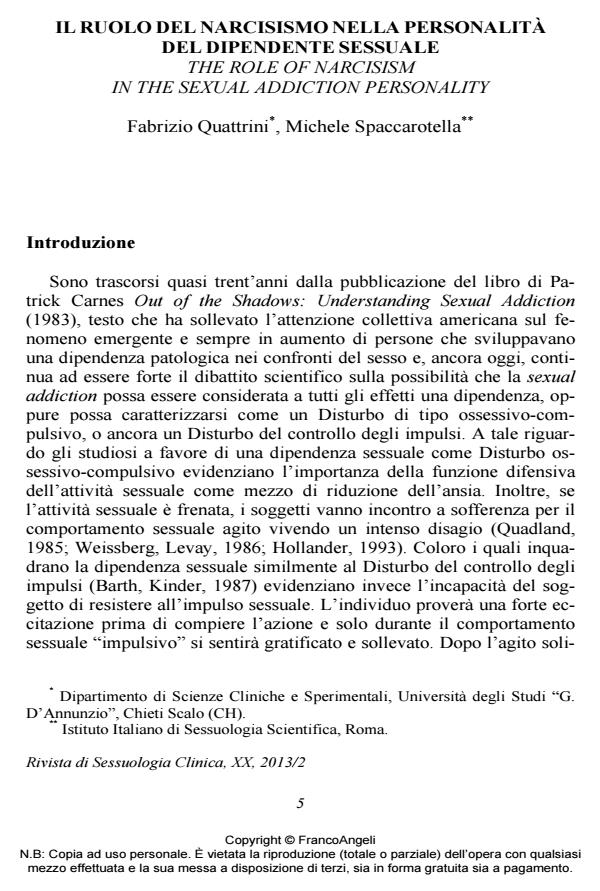In the sexual addiction personality
Journal title RIVISTA DI SESSUOLOGIA CLINICA
Author/s Fabrizio Quattrini, Michele Spaccarotella
Publishing Year 2013 Issue 2013/2
Language Italian Pages 31 P. 5-35 File size 417 KB
DOI 10.3280/RSC2013-002001
DOI is like a bar code for intellectual property: to have more infomation
click here
Below, you can see the article first page
If you want to buy this article in PDF format, you can do it, following the instructions to buy download credits

FrancoAngeli is member of Publishers International Linking Association, Inc (PILA), a not-for-profit association which run the CrossRef service enabling links to and from online scholarly content.
"Sexual addiction" still currently represents a dysfunctional aspect of the sexual behaviour of the individual that hardly finds a clear and exhaustive clinical, psychopathological and diagnostic collocation. The use of an integrated model furnishes the possibility to consider this condition as the point of meeting among a behaviour of leaving of disagreeable feelings (characteristic of the compulsion) and one of active search of the pleasure (peculiarity of the impulse). The personality of the sexual addicted results characterized by a particular sexual attitude that invests all of its relationships. They cannot be considered factually "relations", because the subject just uses sex as a confirmation of his/her own importance/existence. As it happens in the narcissism, the person needs of the others to maintain stable his/her own inside equilibrium, but at the same time he/she must get further since he/she holds them a danger for his/her own psychic safety. The incapability of the sexual addicted to establish a real contact with the others, leading the person to have an extreme sexual behaviour, has pushed the Authors to advance the hypothesis of a possible correlation between the characteristics of the sexual addicted and those of the narcissistic personality.
Keywords: Sexual addicted, narcissism personality, sexual addiction, compulsion, sex drive, porno addicted
Fabrizio Quattrini, Michele Spaccarotella, Il ruolo del narcisismo nella personalità del dipendente sessuale the role of narcisism in "RIVISTA DI SESSUOLOGIA CLINICA" 2/2013, pp 5-35, DOI: 10.3280/RSC2013-002001